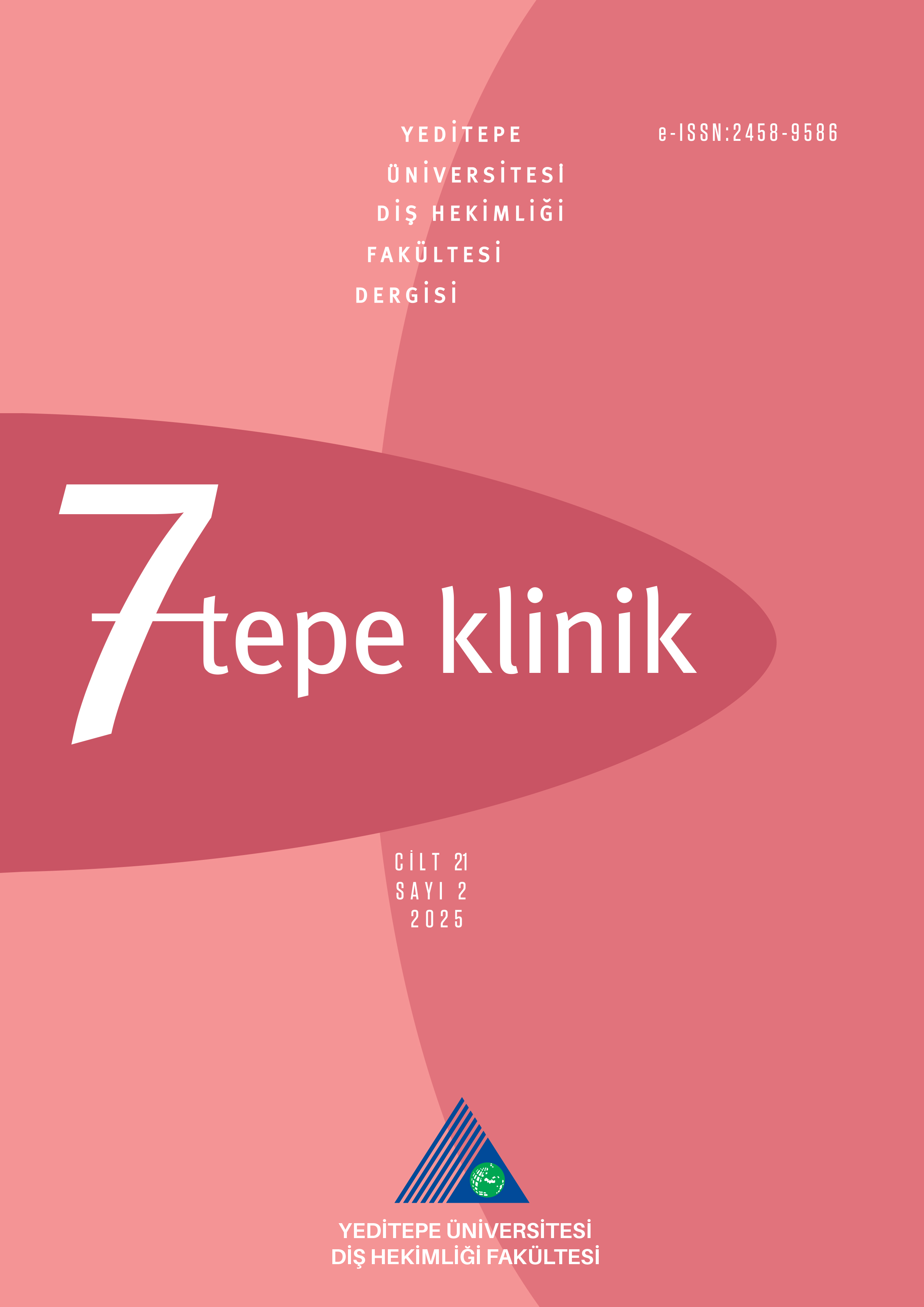Mandibular dişsiz molar bölgenin kesitsel morfolojisinin konik-ışınlı bilgisayarlı tomografi ile değerlendirilmesi
Zühre Akarslan1, Fatma Nur Yıldız1, Zeynep Fatma Zor2, Songül Yapıcı1, İlkay Peker11Gazi Üniversitesi Diş Hekimliği Fakültesi, Ağız, Diş ve Çene Radyolojisi Anabilim Dalı, Ankara2Gazi Üniversitesi Diş Hekimliği Fakültesi Ağız, Diş ve Çene Cerrahisi Anabilim Dalı, Ankara
GİRİŞ ve AMAÇ: Bu çalışmanın amacı dişsiz mandibular molar bölgedeki alveolar kret morfolojisinin konik-ışınlı bilgisayarlı tomografi (KIBT) ile değerlendirilmesidir.
YÖNTEM ve GEREÇLER: Bu çalışmada 103 hastaya (55 kadın ve 48 erkek) ait 206 bukko-lingual yöndeki kesitsel KIBT görüntüsü değerlendirildi. Çalışmaya mandibular ikinci premolar dişi bulunan, birinci ve ikinci molar diş eksikliği olan vakalar dahil edildi. Mandibular ikinci premolar dişin mine-sement sınırı esas alınarak, bunun 5 mm ve 10 mm distal tarafındaki alveoler kretin bukko-lingual yöndeki kesit görüntüleri hazırlandı. Bu kesitlerde mandibular kanalın 2 mm üzerindeki alveolar kret şekli dışbükey (C tipi), paralel (P tipi) ve andırkat (U tipi) tip olarak sınıflandırıldı. Gözlemci içi uyumun belirlenmesi için 25 hastaya ait görüntü aynı gözlemci tarafından ikinci kez değerlendirildi.
BULGULAR: Mandibular ikinci premolar dişe 5 mm distal uzaklıktaki kret tipi vakaların % 64,1inde (n=66) C tipi kret, %19,4ünde (n=20) U tipi kret ve %16,5inde (n=17) P tipi kret şeklinde gözlendi. İlgili dişe 10 mm distal uzaklıktaki kret tipi ise vakaların %52,4ünde (n=54) U tipi kret, %43,7sinde (n=45) C tipi kret ve %3,9unda (n=4) P tipi kret olarak belirlendi. Gözlemci içi uyum için Kappa değeri 5 mm ve 10 mmlik ölçümler için sırasıyla 0,857 ve 0,848 olarak hesaplandı.
TARTIŞMA ve SONUÇ: Bu çalışmadan elde edilen bulgulara göre, alveolar kret şeklinin mandibular ikinci premolar dişe yakın olan molar bölgede çoğunlukla C tipi olduğu, bununla birlikte posteriora doğru ilerledikçe U tipine dönüştüğü belirlendi. Bu bulgu, mandibular molar bölgede yapılacak olan dental implant planlaması için önemlidir.
Evaluation of cross-sectional morphology of the edentulous molar region in the posterior mandible
Zühre Akarslan1, Fatma Nur Yıldız1, Zeynep Fatma Zor2, Songül Yapıcı1, İlkay Peker11Gazi University Faculty of Dentistry, Department of Dentomaxillofacial Radiology2Gazi University Faculty of Dentistry, Department of Oral and Maxillofacial Surgery
INTRODUCTION: The aim of this study was to evaluate alveolar ridge morphology in the edentulous molar region of the mandible via cone-beam computed tomography (CBCT).
METHODS: This study included 206 cross-sectional CBCT images of 103 patients (55 females and 48 males). Inclusion criteria were based on the absence of mandibular first and second molar teeth and the presence of mandibular second premolar tooth. Cross-sectional images of 5 mm and 10 mm distal regions to the cemento-enamel junction of the mandibular second premolar were prepared. The shape of the alveolar ridge 2 mm above the superior border of mandibular canal was classified as convergent (C type), parallel (P type) and undercut (U type). Images of 25 patients were re-evaluated for the assessment of intra-observer agreement.
RESULTS: In total, 64.1% (n=66) of the cases had C type alveolar ridge, 19.4% (n=20) had U type and 16.5% (n=17) had P type alveolar ridge in the 5 mm distal regions to the second premolar. In the 10 mm distal regions to the second premolar, 52.4% (n=54) had U type alveolar ridge, 43.7% (n=45) had C type alveolar ridge and 3.9% (n=4) had P type alveolar ridge. The Kappa values for 5 mm and 10 mm regions were calculated as 0.857 and 0.848, respectively.
DISCUSSION AND CONCLUSION: The results of this study showed that C type was the most common alveolar ridge shape in the molar region near to the 2nd premolar but the shape turned into U type posteriorly. This finding is important for implant planning in the molar region of the mandible.
Makale Dili: Türkçe



